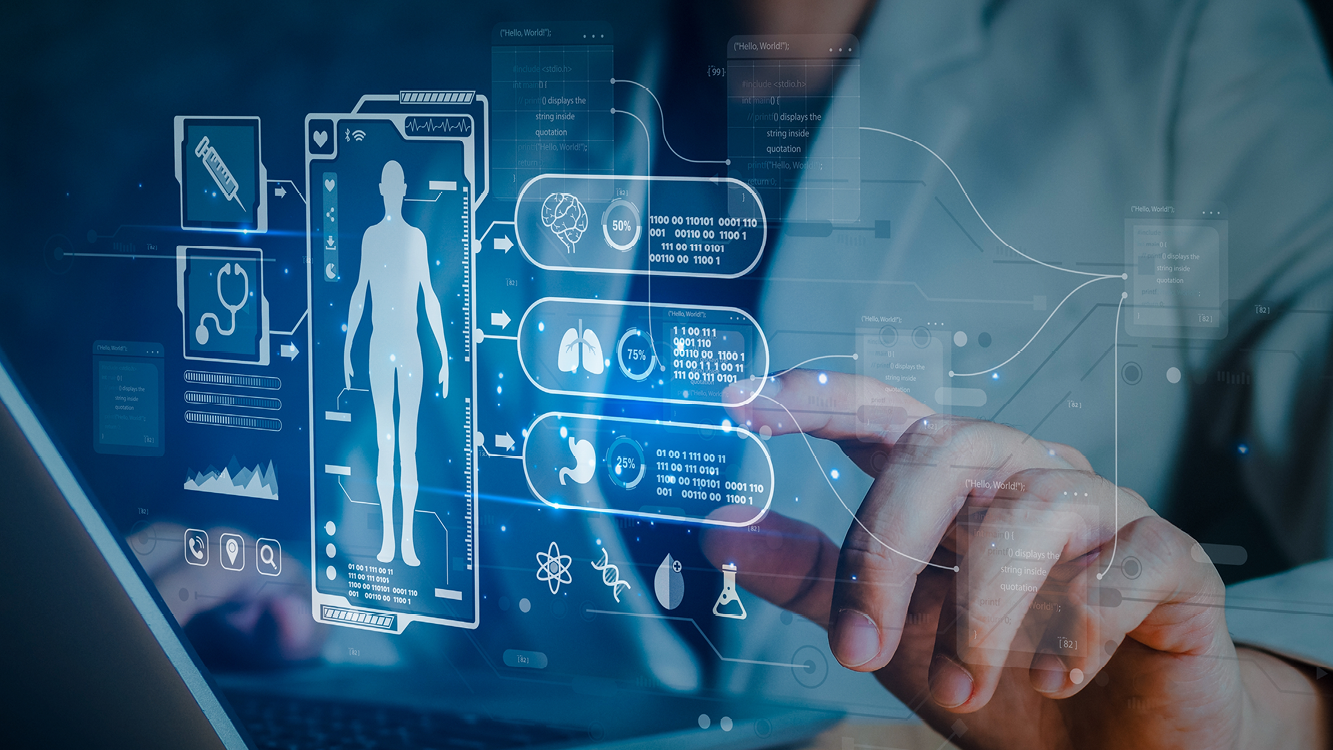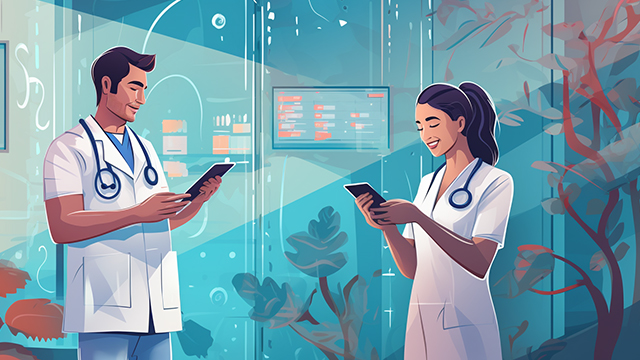5 Technologies Making Hospitals and Healthcare Smarter
Take the opportunity to provide solutions that give healthcare organizations access to information and allow them to save time and enhance the...
BlueStar's diverse portfolio offers unparalleled access to premium products and services that drive business growth and success. From state-of-the-art hardware to advanced software solutions, our portfolio is designed to empower businesses with the tools they need to thrive in today's competitive landscape.
Our vertical-based content focuses on different industry technologies, solutions, and insights.
A true VAD offers top-notch pick, pack and ship services, and provides programs and services that add value to the distributed products that increase their value or worth.
The BlueStar Difference
Engaging patients and providing care digitally requires new technology. Meet the demand.
Dubbing it a possible “breakthrough year,” some industry leaders foresee a bright 2024 for healthcare IT. Widespread internet access, 5G availability, increasing demand for virtual health services, technological advancements, and greater investment in digital healthcare contribute to the promising outlook. Statista projects the European digital health market to reach USD 36.23 billion in 2024. Growing at a CAGR of 6.3%, the market will reach $46.36 billion by 2028. Remote monitoring, wearables, screening, and diagnostic software, including radiology analytics, make up some of the fastest-growing segments.
Pay attention to these trends as the digital healthcare market expands in 2024:
Telemedicine
During the COVID-19 pandemic, governments promoted greater use of telehealth services. By March 2021, 71.6% of Spain’s population, 65.4% of Slovenia’s, and 61.9% of Poland’s had received a medical consultation through telemedicine. Propelled by demand, cost savings, and increased internet availability, this trend continues.
Research shows using digital solutions to provide care improves clinical outcomes and increases the incidence of follow-up by healthcare professionals. Telemedicine services reduce mortality and morbidity in a cost-effective, accessible delivery system.
Initiatives like the Regional Digital Health Action Plan for 2023–2030 encourage the development and implementation of telehealth as a tool to reduce geographical barriers and expand access to healthcare. The Digital Health Care Act (Germany) includes providing online video consultations to be routinely used and making funds available for developing innovative digital solutions. This is especially beneficial for patients in rural areas.
To provide telemedicine, healthcare providers need reliable, secure systems that enable quality communication and video images integrated into the healthcare provider’s IT environment.
Self-Service Registration and Touchscreens in Clinical Settings
Registration kiosks speed up check-in, and other screens help patients and visitors find their way to the correct care location. Additionally, vendor and employee check-in kiosks enhance security in care facilities. Touchscreens can increase accessibility with visual, auditory, and linguistic aids, and add convenience to the patient and provider experience.
Medical-grade touchscreen monitors aid in recording medical procedures. They provide clear, accurate images of soft tissue during surgical interventions and help identify anatomical structures. Touchscreen ultrasound tools make biopsies easier. Touchscreens allow real-time feedback as medical professionals work on a patient, which helps doctors quickly make crucial care decisions.
Healthcare providers require portable, easy-to-clean units with non-porous materials, and ergonomic, intuitive controls to increase convenience and efficiency, while maintaining hygiene.
Exploring AI in Healthcare
Artificial intelligence (AI) has captured a great deal of attention across industries, and healthcare is no exception. Widespread staffing shortages, combined with aging populations, make it necessary to embrace smart tools, which can augment the work of existing staff and efficiently deliver accessible, affordable, high-quality health services. AI applications can support healthcare professionals in analyzing data, making diagnoses, predicting likely outcomes in diseases, and providing insights into disease prevention.
Some challenges and risks come along with the benefits of AI in the healthcare sector. Some medical professionals remain suspicious of the technology, and ethical, social, and legal questions must be answered. European countries are working to share knowledge and create regulations to ease some of these concerns. The EU AI Act is one example. With a provisional agreement on this comprehensive legislation (as of December 2023), Parliament and Council seek to ensure continued innovation, while protecting citizens’ rights, the rule of law, and the environment.
Wearables
Facing a rise in chronic diseases, Europeans who take a more proactive approach to managing their health are adopting wearable devices to help them monitor their blood pressure, pulse, oxygen saturation, blood sugar, and more. They’re also willing to share the data with their healthcare providers. Mordor Intelligence forecasts the wearable device market will grow from USD 11.11 billion in 2024 to USD 22.75 billion in 2029, a CAGR of 15.41%.
With the capability to continuously monitor and report metrics, wearable devices not only benefit patients by proactively identifying health problems and helping them manage chronic diseases like diabetes, but they also help control the cost of delivering healthcare and reduce the need for in-person appointments. Wearables promote highly personalized and patient-centric care in an efficient, affordable way.
Healthcare organizations need your expertise to select and integrate devices with their systems and to secure data transmission.
Blockchain
Healthcare is filled with interactions and transactions between parties, like insurance companies and care providers. With its immutable “blocks” using distributed ledger technology, blockchain can make sharing information easier, more secure, and more efficient. It removes middlemen in healthcare delivery and reduces bureaucratic inefficiencies while democratizing data.
One striking advantage of using blockchain is that it aids in preventing counterfeiting, mislabeling, and misplacing products, like drugs and vaccines. Blockchain technology ensures correct provenance by tracking individual items from their place of origin, through the supply chain, to their current location.
However, as a relatively new technology, blockchain implementations require expertise and strategy that many healthcare organizations don’t have internally. Your TSP can fill that gap.
AR/VR
The global virtual reality (VR) in healthcare market size is expected to grow from USD 3.11 billion in 2023 to USD 25.22 billion by 2030, at a CAGR of 34.9%. Educators and healthcare providers have found increasing use cases for VR and augmented reality (AR) technologies, which is driving market growth.
Virtual solutions enhance health professionals’ ability to treat conditions like phobias, depression, addiction, and PTSD using drug-free methods. They assist in training from operating rooms to MRI machines. AR and VR provide more thorough ways, like 3D body mapping, to locate and investigate body parts, improving the accuracy of biopsy, diagnosis and surgery. Technicians can also tap these technologies to allow in-house maintenance and repair of complicated medical equipment, reducing cost and downtime.
Help healthcare organizations receive maximum value from these organizations by providing access to cloud services and infrastructure, managed services, and security.
Security
The majority of cyberattacks in the healthcare industry are due to human errors, system intrusions, and web application attacks. These attacks can result in compromised personal health information or disruptions to the delivery of healthcare services and may put patients at risk.
As cyberattacks continue to become more sophisticated, the healthcare sector must keep pace with enhanced, enterprise-grade security measures. However, according to the HIMSS23 European Health Conference and Exhibition, they must go beyond just preventing cyberattacks and drill down on resilience and recovery efforts. Provide the expertise and services they need.
Tap Into the Promise of the Healthcare IT Market in 2024
Healthcare organizations understand the benefits of technology to maintain health, offer quality care, save money, and meet patient expectations. You are in a position to grow your business by meeting this demand

Take the opportunity to provide solutions that give healthcare organizations access to information and allow them to save time and enhance the...

Information is vital to quality healthcare. The solutions you provide can keep the lines of communication open.

TSPs have the opportunity to meet the growing demand for solutions that help technicians get the job done accurately and quickly.